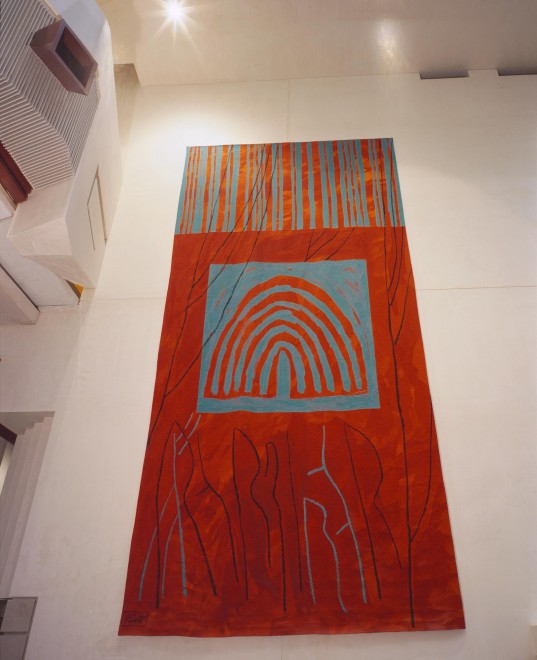At eight metres high and four metres wide the Corryvrechan tapestry is one of the largest in the collection. It was designed by Kate Whiteford and woven by the Dovecot Studios for the opening of the Museum of Scotland in 1998 (which, along with the Royal Museum, became the National Museum of Scotland in 2006) but in 2003 it was moved to a more prominent position in Hawthornden Court.
Since then, inspection and surface cleaning to remove dust has been carried out by the conservation team, working from a cherry picker lift. The top edge of the tapestry is about 20 metres above a void, so this is the only way we can access it.
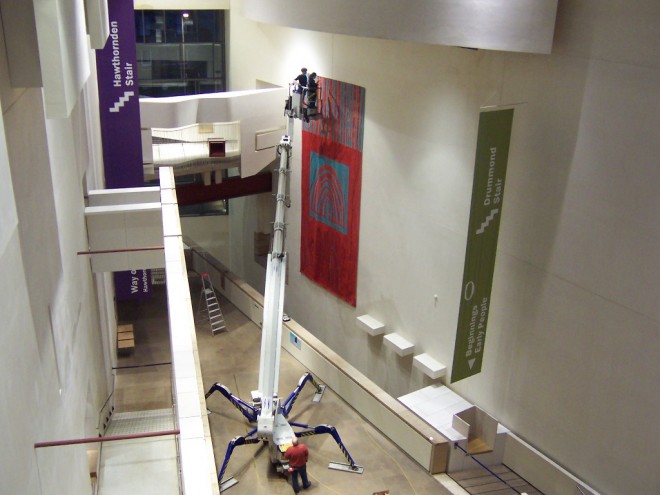
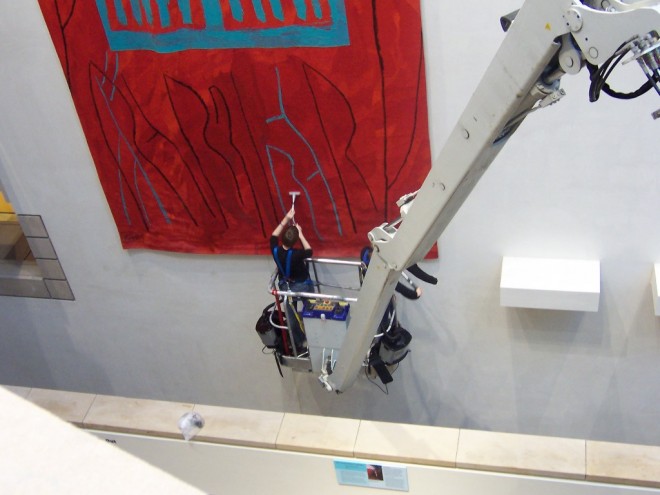
During this process, concern was raised that there was evidence of potential moth infestation on the tapestry. Moths are an issue for all organic museum objects, especially those made of wool like this tapestry. National Museums Scotland has strict guidelines for checking for pests like moths, and an active programme of checking and freezing objects to prevent an infestation occurring. We decided to take the precautionary step of taking the tapestry down so that it could be frozen, which is a standard treatment in museums.
Taking the tapestry down involved the installation of a large scaffold, and the engagement of contractors T. G. McDonald Engineering Limited to manage the process, as the tapestry isn’t just large, but also heavy at about 90 kilograms. It also involved quite a team from National Museums Scotland; from Conservators to the Design and Technical teams, from Support Staff to Security and others.
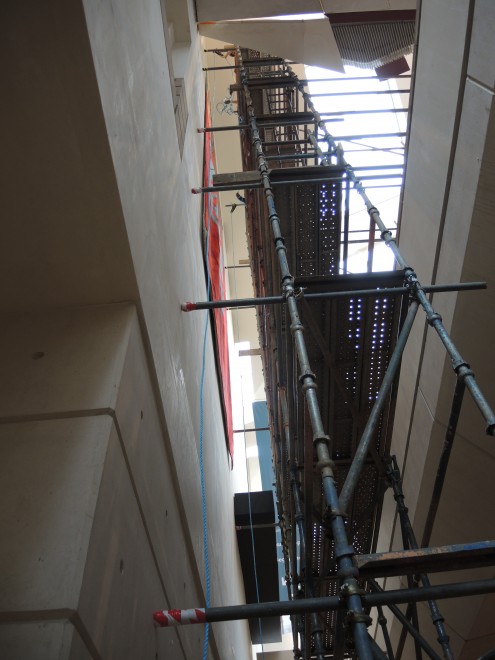
The tapestry hangs from six rows of Velcro™, a standard technique for displaying this type of textile. The ‘soft’ Velcro is stitched to the upper edge of the back of the tapestry and the ‘hard’ Velcro is stapled to a wooden batten on the wall.
To take the tapestry down the top two rows of ‘soft’ Velcro were eased away from the wall, and a new wooden batten which had two strips of ‘hard’ Velcro stapled to it was eased into place. The rows of Velcro on the tapestry were pushed together with those on the batten, before easing apart the other four rows of Velcro between the tapestry and the wall. This let the tapestry hang free on the new wooden batten, which was then lowered to the floor using ropes on a pulley system.
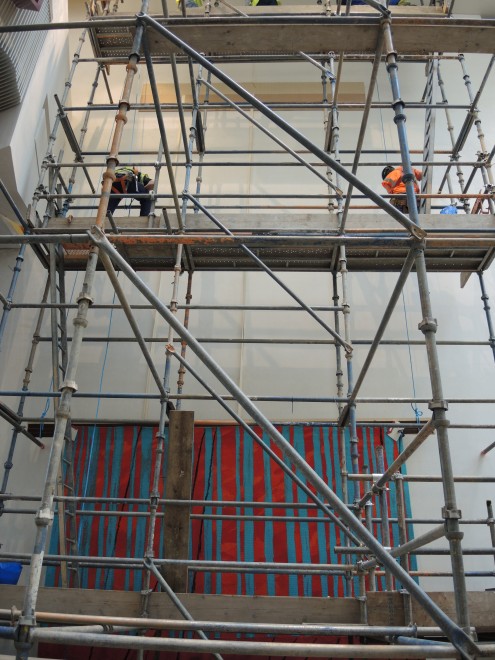
As the tapestry arrived at floor level it was carefully folded and then moved to a large space nearby so it could be rolled up. Once rolled, the tapestry was sealed in polythene in preparation for moving to the National Museums Collection Centre.
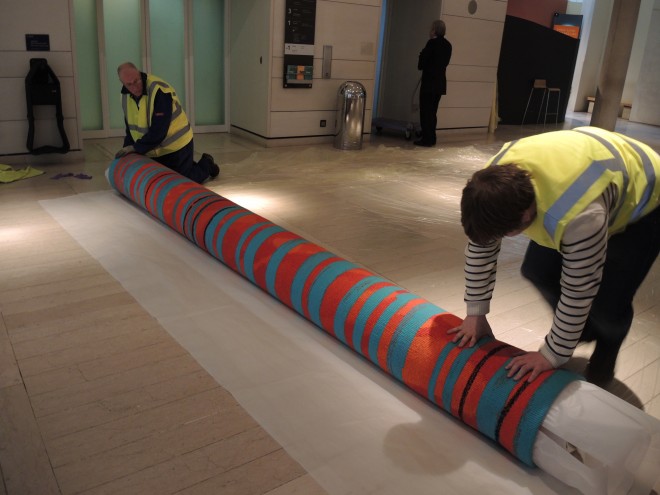
At the Collection Centre it was placed in a walk-in freezer unit, and kept at -30° for a week. After a period of defrosting, the tapestry was moved back up to the site for re-installation.
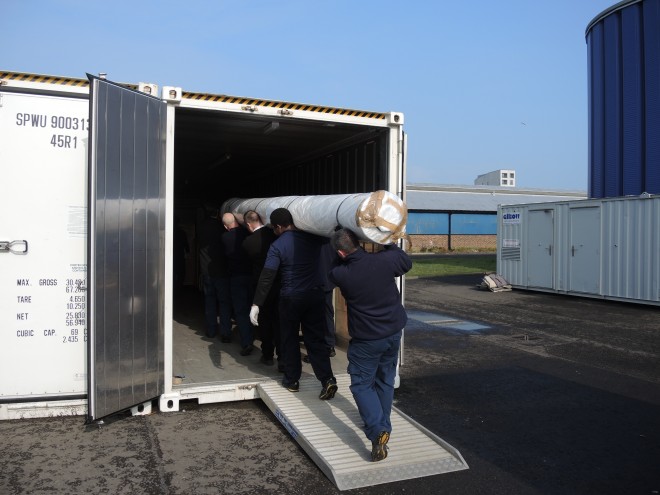
The whole process then started in reverse, to reinstall the tapestry back in Hawthornden Court. Before this we took the chance to do a thorough inspection of both sides of the tapestry. This hadn’t been possible to do properly while the tapestry was hanging, and although a number of dead moths were found it was great to be able to see that there was no major infestation. The textile conservators also surface cleaned it well on both sides using conservation vacuum cleaners.
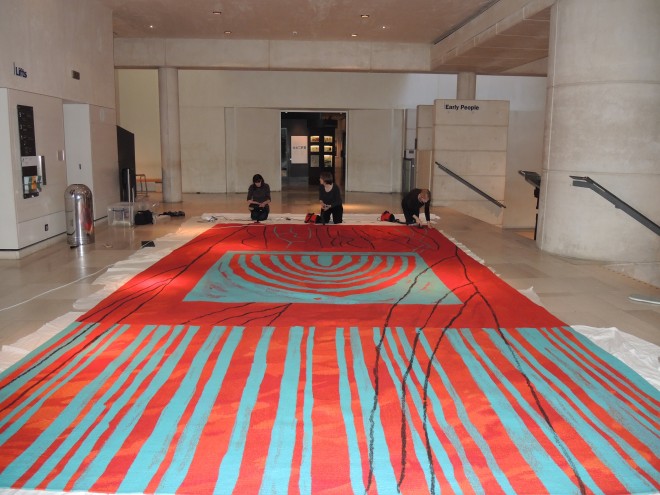
The tapestry was then rolled up for the last time and hoisted to the top of the scaffold. It was secured there with the ropes, and the existing strapping tapes were attached to the scaffold to prevent the tapestry from unrolling as the Velcro was lined up neatly and pushed into secure contact. Once this was done the strapping tapes were released and the tapestry slowly lowered, back into its hanging position.
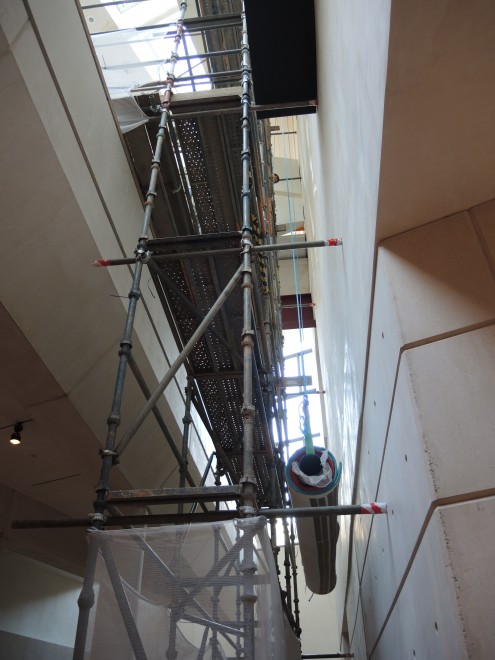
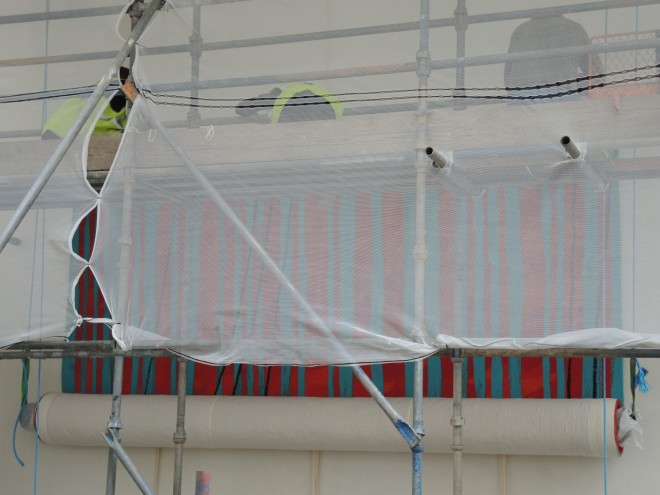
This was a difficult job, working at height and with such a large and heavy modern tapestry, but it was a great precautionary measure against moth infestation and good to see that we could achieve what had at first seemed very daunting indeed.
